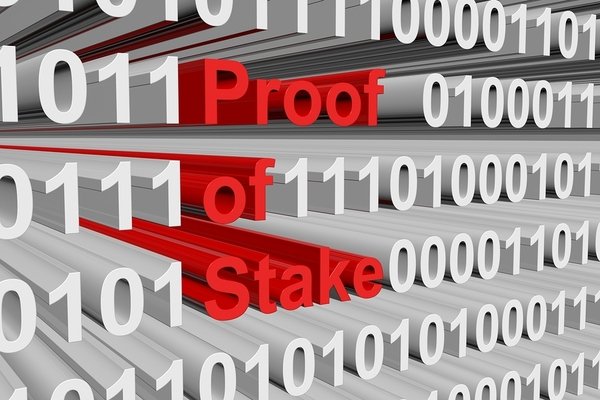
In the digital currency world, the debate over Proof of Stake (PoS) and Proof of Work (PoW) is an ongoing one. You have most likely seen these terms and have wondered what they mean.
When digital currencies were first created, they were centered on proof of work. Fast forward to today, and the implications proof of stake have had on altcoins is huge.
Those in favor of PoW argue that it is the original transaction system that Satoshi Nakamoto wanted for digital currencies, while fans of PoS will point to the original mining process being inefficient and out-of-date.
This article explains how PoS and PoW work, while also looking at the differences between the two.
Proof of Work Explained
Showing your work is an essential part of mining bitcoin and some altcoins. It is the foundation of how these coins work. In simple terms, if you want to mine, buy, and sell altcoins, each of these transactions requires proof of work. How does the process occur?
You can describe proof of work as being a very difficult task to complete, but an easy one for someone to verify once it is done. The following example might help you understand the process.
Compare proof of work to doing a household task like painting a bedroom or decluttering a garage. It is not an easy job and will most likely require some tools and take you some time to complete.
However, once you are done, the house looks nice and updated, and you get a pat on the back for your work. Anyone looking at the result can quickly verify that you have, indeed, done the work.
In a similar way, when bitcoin or altcoin miners have completed their work, anyone looking at the blockchain can verify that the work is correct quickly and easily.
How It Is Done
Digital coins are created on an economic principle of scarcity, meaning there are a limited number of any altcoins available.
For example, when bitcoin was created, it was designed with the intention of providing a total supply of 21 million bitcoin to be mined. When this number is hit, there will be no more to mine.
What happens if crooks start forging bitcoin? The answer is that the proof of work process allows you to trust and verify.

Hashing Explained
Digital coins verify transactions with "hashes." A hash function can turn a number into another number for a certain purpose. For example, commonly used websites such as Amazon and Google hash your emails and passwords.
Altcoins can do more with hashes. They use a "service string" to tie a set of hashes to an altcoin to prevent the work from being recycled. Think of a service string as a car key. Lots of people can have the same type of car as you, but only your key will work with your particular car.
Proof of works give an altcoin value and makes it unique. By proving that the work is done, a miner is guaranteed that coins have value and that blockchain transactions are valid.
Proof of Stake Explained
In contrast to Proof of work, with proof of stake, it is your investment in the networks that matter, not the graphics processing units (GPUs) used. In PoS, altcoins are "minted", as opposed to being "mined" in PoW.
When blocks are created, the block's creator is randomly picked from holders of altcoins or "wealth" already in the system. The more wealth or coins you hold in a system, the higher your chances are of receiving a block.
After you are assigned a block, your funds will be then held in a form of escrow. When a transaction is deemed fraudulent or bad, the victim of the fraud will be compensated via the stake. Simply put, you are responsible for the usage of the block.
You might be asking, "If my altcoins are accountable, then how will I make money?" The answer to that is transaction fees. With proof of stake, you are a temporary intermediary or one-person bank for transactions, and you make a profit assisting sales. When a block is done, another one becomes available.
The Proof of Stake Impact On Altcoins
There are opportunities and challenges associated with proof of stake. Depending on the altcoin and the network, it might be a fairer and more effective system than proof of work.
One disadvantage of proof of work is that tools are needed for mining altcoins. These tools are not cheap and they are not small. In contrast, proof of stake provides a more level playing field. It enables users to mint altcoins depending on the number of coins they have in their possession.

While the system does work, it also comes with complications. Take for example the sudden rise of an altcoin's value. Some may view the people holding the majority of this particular coin as having an unfair advantage of minting the altcoin.
The design of the system privileges those who have more coins, as they are in a better position to take a hit if the transaction is fraudulent or bad.
The Main Differences And What To Take Away
Supporters of PoW will argue that it enables digital currencies to function better as a currency. In contrast, they believe the PoS model encourages people to stake altcoins for long periods, resulting in coins becoming inactive.
Supporters of PoS will combat this by saying that the system is an answer to the energy consumption problem created by bitcoin. The more people that use the Bitcoin network, the more computer power it will need to facilitate them.
When you increase the computer power, you also increase the hashrate difficulty. This means more work for computers to generate blocks as well as higher energy consumption. Critics argue that this issue cannot be solved using a PoW system.
There are pros and cons to both models and it will be interesting to see how coins from these systems perform in the market. It is worth remembering that block rewards will no longer exist once a currency's total supply is minted and circulated.
As a result, could there be PoW altcoins using PoS systems down the line? The digital currency community will have to wait and see.
To keep up-to-date with what is happening in the world of New Finance, sign up for the Bitcoin Market Journal investor newsletter today!
POW and POS is such a debate that it will always rev up a crypto enthusiast. In any case to who ever the future might belong to, both schemes have proved their worthiness in the past years. At this point of time they might seem to opposing forces but in a lot ways they compliment each other. This is such a boon for the crypto world. With multiple options on the table we can effectively combat skeptics outside this domain.
This was a good read, thanks!